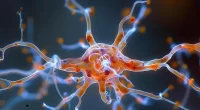Ataxia is a condition where someone has trouble coordinating their movements. Acute cerebellar ataxia is a specific type of ataxia that affects children and causes unexpected coordination loss.
This condition is quite common in children, particularly after they’ve had an infection or a severe illness. The good news is that most children with acute cerebellar ataxia recover on their own without needing special treatments.
It is the most frequent cause of ataxia in children. Keep reading to learn more about this condition, including its symptoms and how it can be treated.
What is it?
The cerebellum is an area of the brain that helps control movement, balance, and coordination. If the cerebellum gets damaged, it can lead to problems with coordination and movement, a condition known as ataxia.
In individuals, acute cerebellar ataxia often happens after they’ve had an infection caused by a virus or bacteria. This infection can make the cerebellum swell, which affects the child’s ability to balance and move properly.
Fortunately, most of the time, the symptoms of acute cerebellar ataxia improve and go away within about one month.
Symptoms
Acute cerebellar ataxia can present with a range of symptoms. A child may experience a lack of stability while walking and have difficulty with coordination, particularly affecting the head or trunk rather than the limbs. Other noticeable symptoms include uncommon head movements, such as nodding, and abnormal eye movements, where the eyes may dart from side to side involuntarily. Additionally, the child might exhibit slurred or slow speech and show modifications in behavior, mood, or personality. Common physical symptoms include headaches, a sick feeling in the stomach, and vomiting.
It’s important to note that some of these symptoms can be the same as those seen in other brain disorders, like strokes, migraines, brain lesions, head injuries, and metabolic diseases. Therefore, providing the healthcare provider with a comprehensive history of the individual’s symptoms is crucial for accurate diagnosis and appropriate treatment.
Causes and Risk Factors
In most cases, acute cerebellar ataxia in children is an after-infection syndrome, meaning it typically occurs after the individual has had an infection. Various infections can lead to ataxia, but some of the most common ones include Epstein-Barr virus, chickenpox, the flu, mycoplasma, herpes, hepatitis, mumps, measles, and parvovirus. Thanks to widespread vaccination, the chance of developing cerebellar ataxia has decreased significantly, as many of these diseases are now less common.
In rarer instances, cerebellar ataxia in children may result from other health issues. These can include autoimmune diseases, metabolic or endocrine disorders, brain growths, malnutrition, strokes, diabetes, or rare genetic disorders. Identifying the specific cause is essential for determining the appropriate treatment and management for the condition.
Diagnosis
When a child shows symptoms that suggest acute cerebellar ataxia, particularly after a recent infection, a healthcare provider may doubt this condition. However, because there is no certain examination for acute cerebellar ataxia, the diagnosis process involves eliminating other possible causes.
To do this, the healthcare provider may order several examinations. A urine test can help determine if the child has consumed anything dangerous. Blood tests are used to check for toxins and signs of infection in the bloodstream. Imaging scans, like CT scans or MRIs, help identify any potential issues in the brain. Additionally, a lumbar puncture may be performed to examine the cerebrospinal fluid for signs of inflammation and infection.
While individuals with acute cerebellar ataxia usually have casual results from a lumbar puncture, there may sometimes be a heightened in cells of white blood, which can indicate an infection that has recently appeared.
Treatment
This condition is not dangerous, and most cases resolve on their own within one month. According to a report in 2016, about 91 out of 100 cases improved within this time frame.
If an individual is experiencing an active infection, the healthcare provider will first focus on treating that infection. Depending on the kind of infection, this may involve antiviral or antibiotic medications. In some cases, anti-inflammatory medicines might also be recommended.
There is no certain treatment to cure this condition itself. Rather, the focus is on handling the underlying cause and decreasing the individual’s discomfort.
For cases where symptoms persist, the healthcare provider may suggest additional treatments. These can include corticosteroids to decrease swelling and inflammation, intravenous immunoglobulin therapy using donated antibodies, plasma exchange therapy to filter the plasma, and medicines to alleviate spasms of muscle.
In cases where the child continues to have coordination issues, physical or occupational therapy may be beneficial in helping them regain better coordination and movement.
Recovery
Many individuals get well completely from acute cerebellar ataxia within a few days after the signs first occur. Even though there is no particular treatment to cure the condition, many children get better on their own without needing special medical interventions.
If a child does not show signs of improvement within a few weeks, it might indicate that another condition is causing the ataxia. In such cases, the healthcare provider may conduct additional tests to investigate other potential causes, like genetic disorders, developmental delays, or immune diseases.
For those who don’t fully recover, there might be continued problems with walking or coordination. These problems can heighten the risk of complications, like traumas from falls. In these situations, long-term physical or occupational therapy can be helpful in enhancing their movement and decreasing the risk of accidents.
It’s important to note that acute cerebellar ataxia is neither dangerous nor progressive, meaning it does not lead to worsening of the condition over time.
Summary
Acute cerebellar ataxia is a condition in children characterized by unexpected coordination loss, often occurring after an infection. Most individuals recover fully within a few weeks, even without certain treatment. If recovery does not occur within a few months, further tests may be needed to eliminate other causes like genetic disorders or autoimmune diseases. Persistent cases may result in ongoing coordination problems, but long-term therapy can assist. Acute cerebellar ataxia is neither dangerous nor progressive, and with proper management, children generally see improvement.









